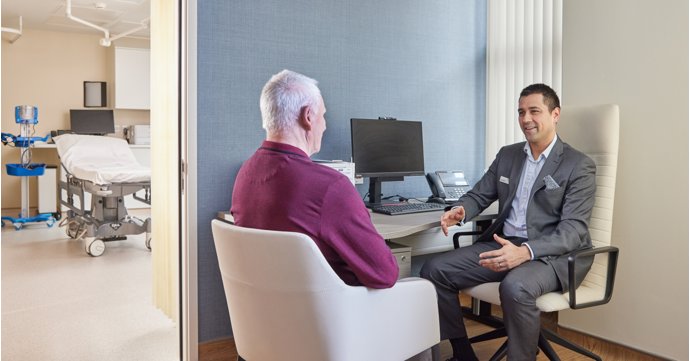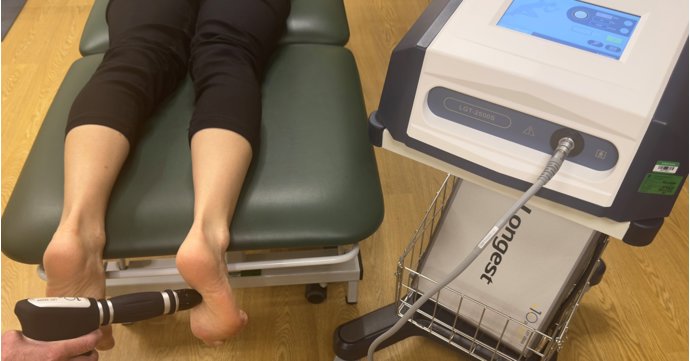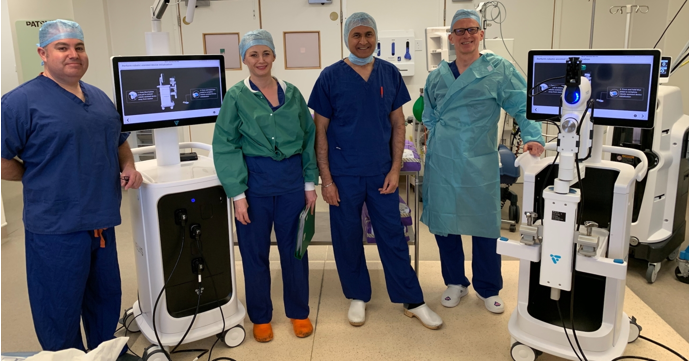'Hip hip hooray!' is how most patients feel after being released from the clutches of pain.
It can be fear of the unknown that puts many people off getting the surgery they need, but there's plenty you can do to inform yourself before deciding on how you'd like to move your health forward.
SoGlos speaks to Nuffield Health Cheltenham Hospital's specialist orthopaedic hip surgeon James Pegrum about how hip replacements work and what surgery could mean for you.

Can you tell us a bit about hip replacements in general?
Hip replacements are the most performed joint replacement, and in the last three years, almost 250,000 have been performed across UK.
It’s also known to be one the most successful operations, for improving quality of life in patients with arthritic pain. The procedure itself involves replacing the warn out ‘ball and socket’ joint of the hip.
The average age in the UK for a patient undergoing a hip replacement, is 68. Patients often ask if they are too young or too old for surgery; but there are many factors that are taken in to consideration prior to having surgery. Age, after all, is just a number.
Consultant orthopaedic surgeons can use different techniques when performing the procedure itself. Implants can either be cemented into the bone or secured with a roughened or coated surface. This allows the bone fuse to the implant, making it as strong as possible, and getting you back to what you love doing the most.
The technique widely used nationally is a combination of both these techniques, referred to as the ‘hybrid hip replacement’.
The ‘ball and socket’ components of hip replacement implants are made of different materials such as ceramic, plastic, and metal.
The most commonly used implants are a ceramic ball within a plastic socket, or cup. These materials have excellent wearing properties, reducing the need for revision hip replacement surgery, based on 20 years’ worth of data from the National Joint Registry, which contains data for 1.5 million hip replacements performed in the UK.
What are the early warning signs you may need a hip replacement?
Arthritis can unfortunately affect any joint in the body, and there are around 8.5 million people with arthritis in the UK, resulting in inflammation, pain and discomfort.
Arthritis is a waxing and waning condition, that may give you different symptoms week to week, or even day to day.
When the pain starts interfering with your daily activities and starts to limit your quality of life such as reducing your walking distance, being able to enjoy your usual sporting activities, or even disturbing your sleep pattern, this is a strong indicator that there may be a more advanced type of arthritis within the joint.
If arthritis within the hip joint is severe enough, it can give you a sense of being unstable on your feet, especially on uneven surfaces and could cause your leg to give way unexpectantly.
Typically
hip arthritis causes pain in the groin, thigh and can radiate down the knee or
into the buttock.
What are the benefits of having physiotherapy, before deciding to undergo a hip replacement?
Physiotherapy is often recommended in the earlier stages of arthritis, to help strengthen muscles around the joint, and improve your mobility.
‘Prehabilitation’ or physiotherapy before surgery can be very helpful, optimising your muscle movement, and aiding your recovery post operatively.
When arthritis is more advanced within the hip joint, some exercises can make the pain worse, so it is important to reduce these painful exercises, to avoid increasing pain and reducing mobility.
What happens during a consultation?
The patient and consultant will have a very detailed conversation into the history of the hip problem, discussing how long the patient has been experiencing hip pain/problems, any alternative treatments they have tried before considering surgery and how it affects their daily life.
The consultant will then put a plan in place for diagnostics to be undertaken, or further alternative treatments such as more physio to try and pin point the problem. They will then create a plan with the patient based on what the outcome of the diagnostics will be.
For example, whether to go down the route of surgery, which will then further be explained to the patient during the consultation or other alternative methods the patient can try, one being steroid injections.
The consultant may also suggest lifestyle changes to be considered before deciding that undergoing a hip replacement is the correct treatment.
Things such as increasing exercise may be encouraged, which essentially could improve the patient’s hip pain before the operation and speed up recovery post-op.
To find out more, call (01242) 384036.





















